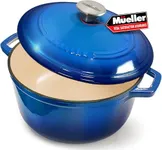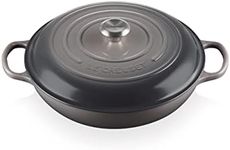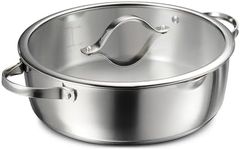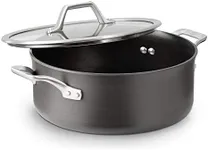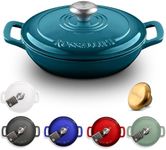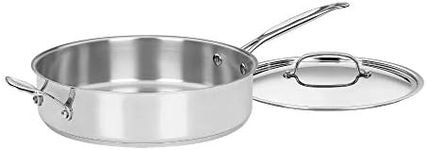Buying Guide for the Best Braiser Pans
Choosing the right braiser pan can significantly enhance your cooking experience, allowing you to prepare a variety of dishes with ease. A braiser pan is a versatile piece of cookware that combines the features of a skillet and a Dutch oven, making it ideal for browning, braising, and slow-cooking. When selecting a braiser pan, it's important to consider several key specifications to ensure it meets your cooking needs and preferences.MaterialThe material of a braiser pan affects its heat conductivity, durability, and maintenance. Common materials include cast iron, enameled cast iron, and stainless steel. Cast iron retains heat well and is excellent for slow-cooking, but it requires seasoning and can be heavy. Enameled cast iron offers the same heat retention with easier maintenance and no need for seasoning. Stainless steel is lighter and easier to handle but may not retain heat as effectively. Choose a material based on your cooking style and willingness to maintain the pan.
SizeBraiser pans come in various sizes, typically measured in quarts or liters. The size you choose should depend on the number of servings you usually prepare. Smaller pans (2-3 quarts) are suitable for individuals or small families, while larger pans (4-6 quarts) are better for bigger families or entertaining guests. Consider your typical cooking needs and storage space when selecting the size.
ShapeBraiser pans are usually round or oval. Round pans are more common and fit well on standard stovetops, making them versatile for everyday use. Oval pans provide more surface area, which can be beneficial for cooking larger cuts of meat or fitting more food. Choose the shape based on the types of dishes you frequently prepare and your stovetop configuration.
LidA good braiser pan should come with a tight-fitting lid to retain moisture and heat during cooking. Some lids are designed with self-basting features, which help to keep the food moist by redistributing condensation. Consider whether you prefer a glass lid, which allows you to monitor the cooking process, or a solid lid, which may retain heat better. The lid's material and design can impact the cooking results, so choose one that aligns with your cooking habits.
HandlesHandles are an important feature for ease of use and safety. Look for braiser pans with sturdy, heat-resistant handles that provide a secure grip. Some pans have loop handles on both sides, which can make lifting and transferring the pan easier, especially when it's full. Consider the handle design and material to ensure it meets your comfort and safety needs.
Non-Stick CoatingSome braiser pans come with a non-stick coating, which can make cooking and cleaning easier. Non-stick surfaces prevent food from sticking and reduce the need for excessive oil. However, they may not be as durable as uncoated surfaces and can be prone to scratching. If you prefer low-maintenance cookware and often cook delicate foods, a non-stick braiser pan might be a good choice. Otherwise, consider the trade-offs in durability and maintenance.

